How to Publish Your Book Using Print-on-Demand by R. Scot Johns
 How To Publish Your Book Using Print-On-Demand
How To Publish Your Book Using Print-On-Demand© R. Scot Johns 2009
There are many options and opportunities for self-publishing these days, with the continued development of Print-On-Demand technologies and internet marketing strategies, but here I will lay out as simply as possible how I went about it, and why I chose to do so.
Using Print-On-Demand, or POD for short, a single copy of a book can now be printed to order, and delivered to the distributor within 24 hours. What this means for the independent self-publisher is that large initial press runs - with their equally large initial costs - are no longer necessary, nor are stocking and shipping of the inventory by the author.

Because POD presses are computer-fed, they can continue to run non-stop 24/7 while spewing out an endless stream of data, somewhere amidst which can be any number of your own pages. And because they are not printed until a book is sold, the cost of production is simply subtracted from the selling price and the author/publisher is given what is left. The book is shipped directly from the printer to the distributor and thence to the buyer, with the author never even seeing the product in between.
There are a great many companies that offer publishing services to authors, but there is only one that you should really consider if you wish to be a true self-publisher, and that is Lightning Source. Lightning Source is a sister-company of Ingram Books, and because of this you not only get POD production services, but automatic distribution through a listing in the Ingram database, which gets you automatically placed on Amazon and B&N.com, along with many other e-commerce outlets. No other POD service can offer you this kind of immediate visibility, and I can tell you it is absolutely key to the success of your book.
The biggest difficulty facing self-published works is their lack of marketing. Getting listed on Amazon is critical, and although there are many ways to do this, an Ingram-sourced listing is the best because it offers you the greatest wealth of bells and whistles to get your book seen and ranked in product searches, and without good visibility you will have no sales. There are many marketing options available on Amazon, but for now I will only say that Amazon will be your foremost ally in your effort to create a successful marketing campaign. Believe me, they want to sell your book as much as you do! And, of course, if you’re also aiming at brick-and-mortar stores, Ingram is where they get their listings, although getting them to stock it on their shelves is another matter altogether.
The steps you’ll need to undertake to get your book in print are as follows:
1) Establish yourself as a Publisher
You do this by purchasing a block of ISBN numbers from Bowker in the U.S. or Nielson BookData in the U.K. You can buy a single ISBN for $150, but unless you never plan to write another book you'll want to get a block of ten, which costs only $275 and gives you your own publisher identifier - the set of digits that are all the same within the block of ten. You'll want to start this process as early as possible, at least a month or two before your publication date. Congratulations! You are now a publisher.
2) Get BISAC/BIC Classifications
These are the subject categories under which you want your book assigned. In the U.S. you'll want to go to b
 isg.org and in the U.K. to bic.org.uk for the official listings from which you can choose the ones you think best fit. In the U.S. you can also find categories at the Library of Congress catalog. These will be drawn upon in many places where your book is listed, such as Amazon, who uses them for search and ranking classifications.
isg.org and in the U.K. to bic.org.uk for the official listings from which you can choose the ones you think best fit. In the U.S. you can also find categories at the Library of Congress catalog. These will be drawn upon in many places where your book is listed, such as Amazon, who uses them for search and ranking classifications.3) Complete your Cover Art and Layout
Okay, your book is written, now you need some cover art and layout done. I did my own, but there are many options when it comes to both. Just make sure the cover looks professional and sharp, so that you can read the title clearly and it stands out on a web page. You may not be able to judge a book by its cover, but unless your cover really rocks the book will never reach the judges.
4) Get Advance Reviews and Comments
Another thing you'll want to do well in advance of publication is obtain some reviews. Send your manuscript out to anyone you know who might write a fair and legible evaluation of your work, particularly if they have any legitimate credentials related to your topic or to literature in general. This is critical to generating some initial buzz, as well as giving you material to post in your Amazon listing and on the back cover or initial pages of the book.
5) Get a Lightning Source account
To set up with Lightning Source you will need a business name, as they only deal with publishers, not individual authors. Even if, like me, you're just a one-man show, yo
 u're still a publisher to Lightning Source, so be professional. Enter your Publisher Prefix from your ISBN block, and list yourself as the “owner” of a Sole Proprietorship. You'll want "Publisher Direct Ordering" if you ever want to purchase copies for yourself at wholesale, and you definitely want "Wholesale Distribution." This is what will get you onto Amazon and other online e-tailers. You can also sign up for eBook services if you like. Lastly, you'll need to provide a bank account to which Lightning Source can deposit your earnings and from which it will withdraw your title setup and listing fees. There is no cost to set up a Lightning Source account, only for book submissions.
u're still a publisher to Lightning Source, so be professional. Enter your Publisher Prefix from your ISBN block, and list yourself as the “owner” of a Sole Proprietorship. You'll want "Publisher Direct Ordering" if you ever want to purchase copies for yourself at wholesale, and you definitely want "Wholesale Distribution." This is what will get you onto Amazon and other online e-tailers. You can also sign up for eBook services if you like. Lastly, you'll need to provide a bank account to which Lightning Source can deposit your earnings and from which it will withdraw your title setup and listing fees. There is no cost to set up a Lightning Source account, only for book submissions.6) Submit your Title Data to Lightning Source
Before submitting the actual manuscript you need to establish a listing for your title, which is a fairly extensive process requiring the input of a lot of data, after which Lightning Source will provide you with a custom template for your cover art, which will include a barcode on the back with the ISBN you have assigned to it. You do this using the New Title Setup link from your account page. Here you’ll list the publication date, choose your retail price, enter the discount you’ll offer to retailers, and add a short description of your book. For more detailed information on how to determine your price and discount, visit my blog at http://authoradventures.blogspot.com, where I go into it in more depth.
7) Create PDF files and submit them to Lightning Source
Once your text and art are finalized you will need to create two files: one containing all the interior material and one the outer jacket art. These both need to be in PDF format, and for the cover must comply with fairly tight requirements of size and quality. Lightning Source has several tutorials and templates to guide you through the process, but it can be fairly daunting to the uninitiated. Once you have these files, go to the title page that you created in the last step and upload them to Lightning Source. After a week or so the files will be approved (or rejected with instructions on what to fix), and a proof sent out. When your proof arrives, check it thoroughly for any errors, with a ruler in hand to measure margins and header spacing. Now is the time to catch any discrepancies that might creep in. Once you're certain all is well, go to your account page and approve the proof. As soon as you do your book will be available for ordering, and Amazon will soon be selling it by the truckload, even if there’s only one copy on the truck!
R. Scot Johns is a life-long student of ancient and medieval literature, with an enduring fascination for Norse mythology and epic fantasy. He first came to Beowulf through his love of J. R. R. Tolkien, a leading scholar on the subject. As an Honors Medieval Literature major he has given lectures on such topics as the historical King Arthur and the construction of Stonehenge. He owns and operates Fantasy Castle Books, his own publishing imprint, and writes the blog Adventures of an Independent Author, where you can follow his progress as he writes The Jester’s Quest, his second novel. You can visit his website at www.fantasycastlebooks.com.








































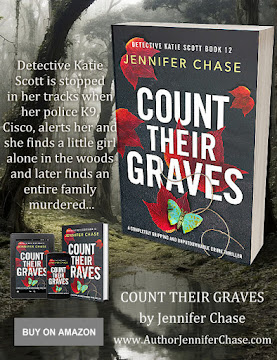















































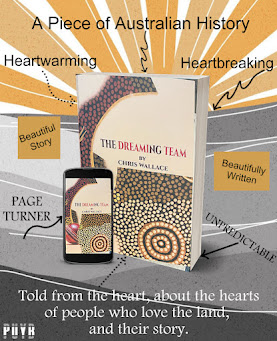















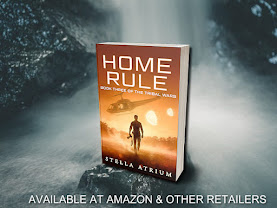




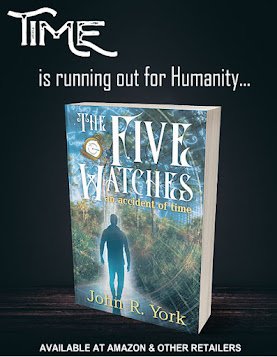










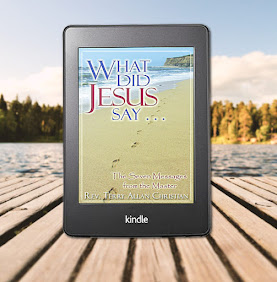






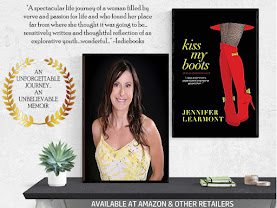




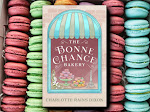
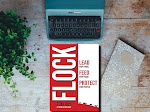


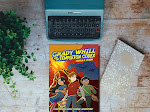








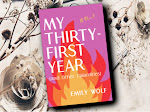






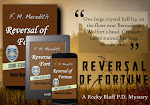









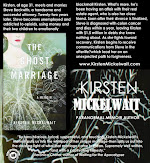






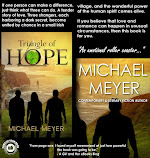
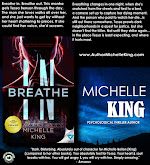
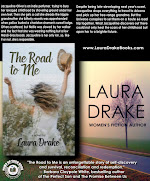


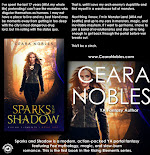








































Greetings everyone,
ReplyDeleteThanks for stopping by, and I hope this article has proven informative. Please feel free to post any questions you might have, as I am happy to offer any insight I can in helping other authors see their work get published. I'll check in throughout the day to respond to your comments, and be sure to check out my blog at http://authoradventures.blogspot.com for even more discussion on this subject!
Fantastic post, Scot, and it's an honor to be able to publish it here at The Writer's Life! You have lots of useful information here on what print-on-demand is all about. Seems more and more authors are taking this route and more and more small press publishers and self-published authors are taking this route because of its many advantages. Thanks again, Scot!
ReplyDeleteYou're welcome Dorothy, it's my pleasure! Even the big trade publishers are now using POD to produce their backlist titles and for emergency runs to meet unexpected demand of front list titles. And in these trying economic times when the major trades are putting freezes on buying new works - or going out of business altogether! - the self-published author has nothing to lose and everything to gain by going into business for themselves. I highly recommend this route to everyone. You do have to do all the marketing yourself, but that's where you come in! So thanks again.
ReplyDelete"Even the big trade publishers are now using POD to produce their backlist titles and for emergency runs to meet unexpected demand of front list titles."
ReplyDeleteYou know, I have noticed that. About time print-on-demand came out of the closet for people to see how valuable a service it really is. Without it, self-publishing wouldn't exist and self-publishing is the chosen method of a lot of authors these days. Did you ever try the so-called traditional route?
Hello again Dorothy,
ReplyDeleteI did give the trades a shot. In fact, I hadn't planned to self-publish at all, but while I was waiting impatiently to hear back from agents and editors I started looking into it. I sent out queries to over 50 agents, because of course, most of the major trades don't take unsolicited submissions directly from authors. I did send out queries and manuscripts to three fantasy publishers who do accept submissions - TOR, DAW, and ROC - each of whom rejected it after a lengthy wait. The trouble with approaching publishers directly is that the major ones require you to submit to them exclusively until they make up their mind, so that it took almost a year just to go through these three publishers! In the meantime I set myself up as a publisher and put the darn thing out myself! I would, of course, love to get a nice advance and a bit of a promotion budget, but at least now I own all the rights and make all the profits from my efforts. Plus, it's been an extremely exciting and interesting journey!
Hi,
ReplyDeleteThanks for sharing such wonderful post. I feel
book printing costs have drastically reduced because of this print-on-demand system.
Hi Jackson,
ReplyDeleteI can't say exactly what effect POD has had on the costs of traditional publication, but the cost of print-on-demand itself is actually higher at the moment, although that's likely to change over time. But although the per-page cost of POD are higher, you also have to take into account that there is virtually no waste involved: that is, no returns, no storage and stocking costs, and only shipping and transportation for copies that are sold. These combined certainly lower the overall cost of a book, and it is something that the trades are only now beginning to comprehend the value of.
thanks,
ReplyDeleteThis info will come in handy for me.
Morgan Mandel
http://morganmandel.blogspot.com
Good info and good blog :)
ReplyDelete